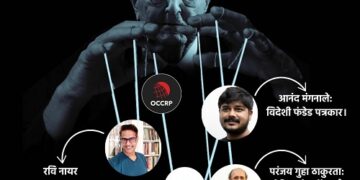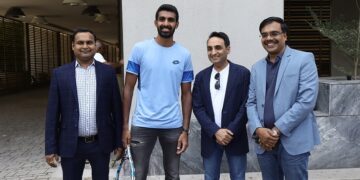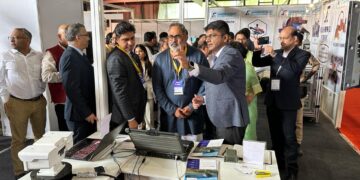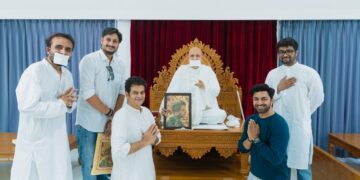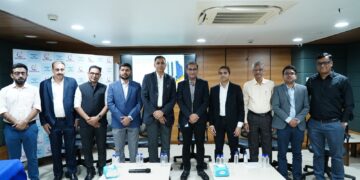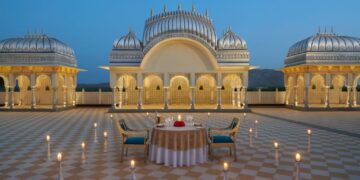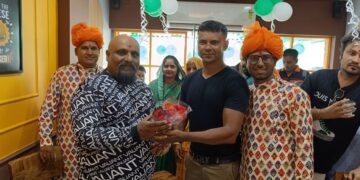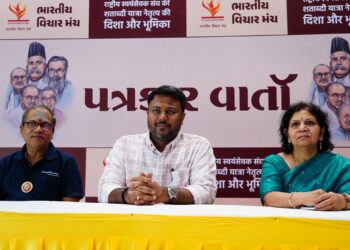Leading architect, Vastu consultant, and academician Dr. Tejas Mojidra is calling for the systematic integration of Vastu Shastra, the ancient Indian science of spatial design, into modern architectural practice and formal education. With a distinguished career spanning nearly three decades, Dr. Mojidra is regarded as one of India’s foremost experts in harmonising traditional Vastu principles with the needs of contemporary design.
Based in Ahmedabad, a city known for its architectural blend of heritage and modernity, Dr. Mojidra has a rare dual expertise in technical architecture and spiritual design science.
Dr. Mojidra has worked on several landmark projects both in India and abroad. These include his Vastu consultancy for the Statue of Unity, the tallest statue in the world, and the idol of Lord Hanuman at Salangpur. He also has an office in Dubai and has contributed to projects in the UAE, the UK, the US and Australia.
Says Dr. Mojidra, “Vastu is not mythology. It is applied science that was centuries ahead of its time. I have been studying temples for a long time and can say that the placement of Mumbai’s Siddhivinayak Temple or the Mahalaxmi Temple, or any other ancient temple was not incidental. These structures were built with astronomical precision. By understanding them, we gain invaluable insights into how space influences well-being, behaviour and productivity. When the world is realising the benefits of Vastu Shastra and adopting the science, we must ensure that it is studied with the seriousness it deserves.”
“Vastu Shastra integrates architecture with cosmic principles, considering directions, energy flow, and environmental harmony. It is high time we viewed these ancient systems not through a lens of blind faith, but with an open, inquisitive mind that respects traditional wisdom while applying modern scientific scrutiny. The alignment of temples, their orientation to celestial bodies, and the materials used were all deliberate choices made to enhance spiritual and environmental resonance. If harnessed wisely, this knowledge can contribute to healthier homes, more efficient workplaces, and even sustainable urban planning,” he says.
Dr. Mojidra has also conducted extensive field research on sites associated with the ancient Saraswati civilisation, further reinforcing the historical roots of Vastu Shastra.
“Vastu existed even during the time of the Saraswati civilisation. I have studied six to seven key sites, including Lothal, Dholavira, Vighakot, and several others across Gujarat and Haryana. These ancient settlements demonstrate a remarkable understanding of spatial planning, water management, and directional orientation. They offer compelling evidence that Vastu was not a later invention, but a foundational element of early Indian urbanism,” he notes.
His in-depth field research on ancient temple sites has sparked a wider interest in repositioning Vastu as a valid field for academic study. Dr. Mojidra regularly speaks at leading institutions, urging the inclusion of Vastu Shastra in architecture and design curricula across India.
Outside academia, Dr. Mojidra reaches a broad audience through TV and radio appearances, print columns, and Vastu-related reels on social media. He is the co-founder of Tatvam Consultancy Services, and has provided consultancy to leading artists such as Kailash Kher, Armaan Malik, Pratik Gandhi, Parthiv Gohil, Mansi Parekh, Sachin-Jigar, besides top political and corporate leaders.
His work has earned him multiple accolades, including the Saraswati Putra Samman, the Kumkum Yuva Ratna Award, and recognition from institutions such as Bhagwat Vidyapeeth.
Dr. Mojidra’s ongoing mission is to bridge India’s spiritual design heritage with today’s architectural challenges, and create spaces that not only function but also inspire and endure.


